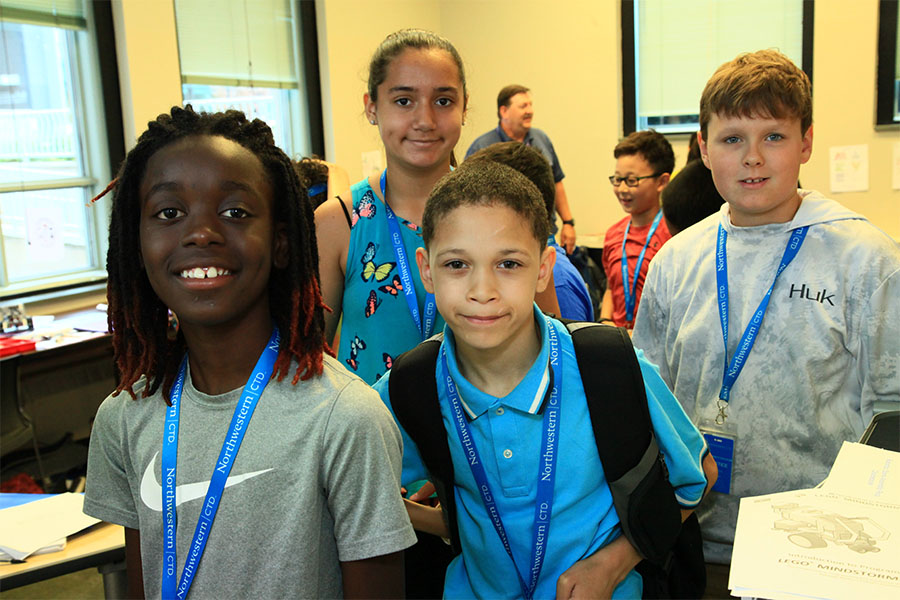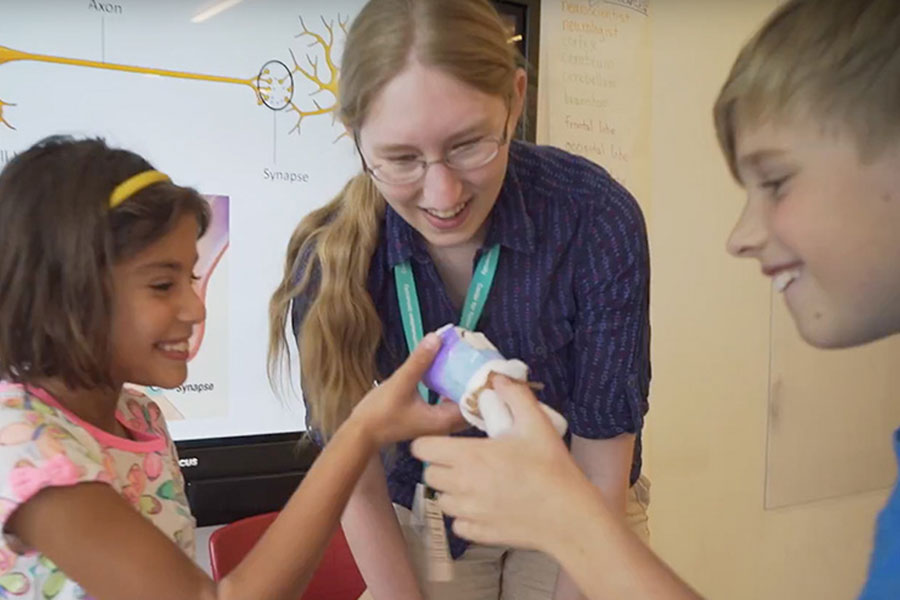Today, we are continuing with our series of posts containing fun and educational activities you can try with your gifted learners when stuck inside on a rainy day.
Nina Diehl has taught for CTD in the
Saturday Enrichment Program &
Leapfrog Summer Program since 2006. We caught up with her recently and asked her to share one of her favorite classroom hands-on activities, and how she chooses lesson plans for her CTD courses:
“At CTD, almost every single lesson is a hands-on experience, so I have to plan accordingly. I look at the best practices like inquiry science, differentiation, and mathematical discourse and I think, ‘These would really work with CTD kids,’. While these practices are useful for students of all abilities and backgrounds, they seem to be particularly successful with the gifted population,”
Thanks, Nina! Now, check out this neat density-measuring activity you can try at home:
Measuring Density
Introduction:
Boats float. Pennies sink. But what about corn syrup and vegetable oil?
Density is an important physical property of matter. Density is how much something weighs compared with how large it is. Imagine a rock that is the same size as a cotton ball. Do they weigh the same? Of course not. This is because they have different densities. The rock is heavier so it has a greater density. Students often have experience with density in kindergarten with simple sink/float activities. Items that float are less dense than water. Items that sink are more dense than water. This experiment takes sinking and floating one step further with liquids.
This lesson is appropriate for students in preschool through sixth grade.
Materials Needed:
• A tall transparent glass
• Water
• Corn syrup or pancake syrup
• One or more of the following liquids:
- Honey
- Liquid dish soap
- Vegetable oil
- Rubbing alcohol tinted with 1-2 drops of food coloring
• A paper and pencil to record data
Instructions:
1. First, pour a layer of water into the glass. The layer should be about the width of your finger.

2. Next, make a prediction. What will happen when you pour syrup into the water? Write down your prediction. Now pour the same amount of syrup as you poured for the water into the glass. Record what happened. You can draw a picture, write a description, or both.
3. Continue to pour each type of liquid, one at a time, into the glass. Before you pour, make a prediction. After you pour, record what happened.

4. After you have poured all of the liquids into the glass and recorded your results, draw a conclusion: What did you learn about liquids from this experiment? What does this have to do with density?
Modifications:
If your child is younger or has difficulty writing or drawing observations, a parent may write down what the student observes after each step of the experiment. Younger children may also need help pouring the liquids carefully.
If you have a child in upper elementary or middle school, your child can develop his or her own chart in which to record the data.
Additional Resources and Links:
http://www.chem4kids.com/ This website gives some kid-friendly (and parent-friendly) information about many aspects of science. It also includes some quizzes to help you test your knowledge.
View Nina Diehl’s math blog here.
Did you enjoy this experiment? Don’t miss Mrs. Diehl’s “Involving Dissolving” course this fall through CTD’s Saturday Enrichment Program! New, eight-week sessions begin October 1 at our sites in Evanston, Chicago, Palatine and Naperville. You'll find a range of engaging subject matters for gifted kids from preK thru Grade 9. In addition to the regular morning schedule, this year, we're offering afternoon courses in Evanston, Chicago and Palatine. Classes fill quickly so register today to ensure your child gets into his or her first choice!
 2. Next, make a prediction. What will happen when you pour syrup into the water? Write down your prediction. Now pour the same amount of syrup as you poured for the water into the glass. Record what happened. You can draw a picture, write a description, or both.
3. Continue to pour each type of liquid, one at a time, into the glass. Before you pour, make a prediction. After you pour, record what happened.
2. Next, make a prediction. What will happen when you pour syrup into the water? Write down your prediction. Now pour the same amount of syrup as you poured for the water into the glass. Record what happened. You can draw a picture, write a description, or both.
3. Continue to pour each type of liquid, one at a time, into the glass. Before you pour, make a prediction. After you pour, record what happened.
 4. After you have poured all of the liquids into the glass and recorded your results, draw a conclusion: What did you learn about liquids from this experiment? What does this have to do with density?
Modifications:
If your child is younger or has difficulty writing or drawing observations, a parent may write down what the student observes after each step of the experiment. Younger children may also need help pouring the liquids carefully.
If you have a child in upper elementary or middle school, your child can develop his or her own chart in which to record the data.
Additional Resources and Links:
http://www.chem4kids.com/ This website gives some kid-friendly (and parent-friendly) information about many aspects of science. It also includes some quizzes to help you test your knowledge.
View Nina Diehl’s math blog here.
Did you enjoy this experiment? Don’t miss Mrs. Diehl’s “Involving Dissolving” course this fall through CTD’s Saturday Enrichment Program! New, eight-week sessions begin October 1 at our sites in Evanston, Chicago, Palatine and Naperville. You'll find a range of engaging subject matters for gifted kids from preK thru Grade 9. In addition to the regular morning schedule, this year, we're offering afternoon courses in Evanston, Chicago and Palatine. Classes fill quickly so register today to ensure your child gets into his or her first choice!
4. After you have poured all of the liquids into the glass and recorded your results, draw a conclusion: What did you learn about liquids from this experiment? What does this have to do with density?
Modifications:
If your child is younger or has difficulty writing or drawing observations, a parent may write down what the student observes after each step of the experiment. Younger children may also need help pouring the liquids carefully.
If you have a child in upper elementary or middle school, your child can develop his or her own chart in which to record the data.
Additional Resources and Links:
http://www.chem4kids.com/ This website gives some kid-friendly (and parent-friendly) information about many aspects of science. It also includes some quizzes to help you test your knowledge.
View Nina Diehl’s math blog here.
Did you enjoy this experiment? Don’t miss Mrs. Diehl’s “Involving Dissolving” course this fall through CTD’s Saturday Enrichment Program! New, eight-week sessions begin October 1 at our sites in Evanston, Chicago, Palatine and Naperville. You'll find a range of engaging subject matters for gifted kids from preK thru Grade 9. In addition to the regular morning schedule, this year, we're offering afternoon courses in Evanston, Chicago and Palatine. Classes fill quickly so register today to ensure your child gets into his or her first choice!

